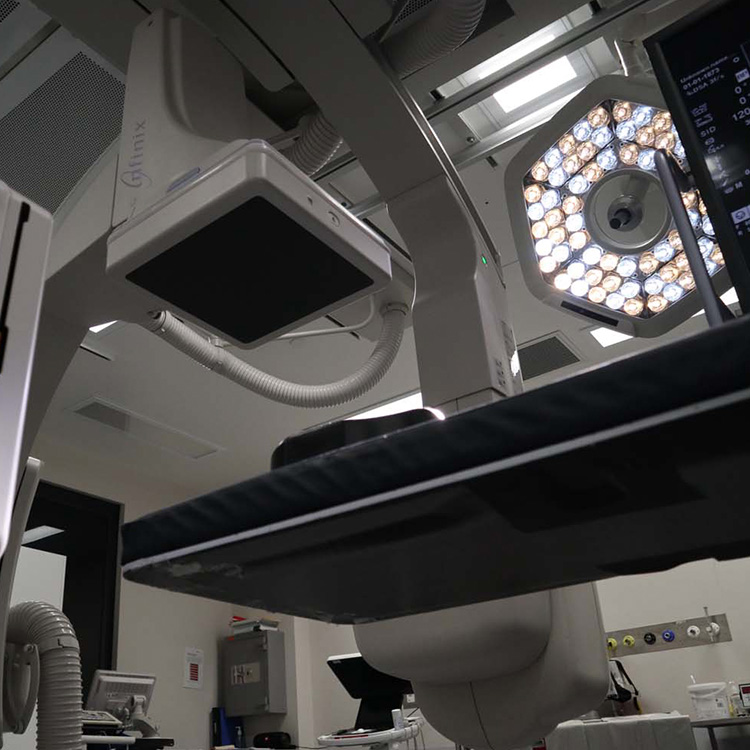What is a subdural haematoma?
A subdural haematoma is a type of intracranial haemorrhage where there is bleeding into the subdural space of the brain. If this is a chronic process the size of the haemorrhage can increase over time and cause significant pressure on the surrounding brain. A membrane can often form surrounding the haematoma. Fragile capillaries within the membrane (generally supplied by the middle meningeal artery) can cause ongoing leakage of blood, which can result in expansion of the subdural haematoma.
What does the procedure involve?
One technique to treat this type of bleeding is to decrease the supply of arterial blood by blocking the middle meningeal artery (this is called embolisation). This is performed by placing multiple catheters in the femoral artery and then navigating the catheters into the desired blood vessel in the head. A glue-like material (called Onyx) or small plastic beads can then be injected into the target artery to decrease blood supply to the membrane covering haematoma. Over time the body reabsorbs the subdural haematoma and the pressure on the brain decreases.
What happens following the procedure?
Following completion of the procedure, you will spend the night in hospital in a surgical ward. If there are no complications from the surgery, you will be able to go home the day following the procedure.
What follow up is required?
A review appointment will be made for 1 week following discharge from hospital. At this appointment, the follow up plan will be discussed which usually involves performing CT scans of the brain at regular intervals to ensure that the subdural haematoma is decreasing in size.
Do I need to fast?
Yes, you will be required to fast. Specific instructions regarding fasting will be provided when booking the procedure.

